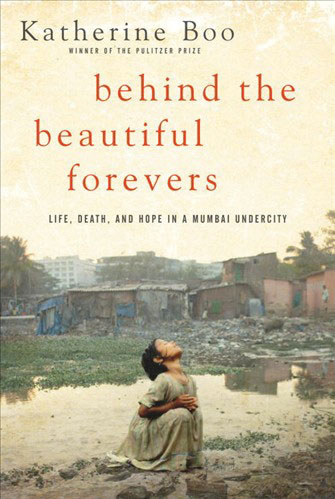 Behind the Beautiful Forevers
Behind the Beautiful Forevers
Winner of a Pulitzer Prize in 2000, endowed with a MacArthur Fellowship in 2002 and staff writer for the New Yorker since 2003, Katherine Boo has landed some of the highest accolades that investigative journalism has to offer. In Behind the Beautiful Forevers, she recreates in well-paced prose the overcrowded and squalid Mumbai settlement of Annawadi, lively home to some 3,000 inhabitants.
Boo has completed years of research, having turned her investigative journalism to reproducing the lives of Annawadi’s inhabitants, and, in doing so, her greatest accomplishment has been in finding a way of retelling their story without deviating into the realm of authorship.
Each family, each hubristic personality, every financial transaction, swindle, bribe, battery and brawl relates to real events reproduced after careful documentation. From hours of interviews, from tape after tape of video footage, after scouring through redacted and forged government documents, from eye-witness reports, and countless other sources.
All too easily could these slumdwellers’ lives have been reduced to mere tragedy, with the author wallowing guiltily in their plight, or painting their daily struggle in grim Dickensian colours. Boo manages to go beyond these things without self-righteousness, without intervention, with only simple narrative force.
Beginning with an Annawadian who torches herself so as to incriminate her neighbours, Boo uses a single event to anchor the reader’s focus. Overly theatrical, perhaps, but by retelling this immolation and the events that follow Boo slowly manages to implicate the interweaving political, religious and socio-economic factors affecting the population of modern Mumbai. With rigorous inquiry and investigation, she reduces the sensational to its component parts: destitution and deprivation, corruption and petty crime, altogether misanthropic individuals tied to the new Indian dream of the good times they call “the full enjoy”.
The result is almost too perfect to be real, but still dramatically so. Those gestures of a young boy sorting trash, the nuances of hopeful girls at the local festival and mothers suckling new-borns vie continuously with the facts of dirty drinking water, misplaced authority and violent electioneering.
To recreate those contradictions with such subtlety shows Boo to be both an exceptional writer and a journalist of assiduous empathy. Her book succeeds because it echoes the tensions of Annawadi. Behind the Beautiful Forevers is brutally, beautifully honest.

